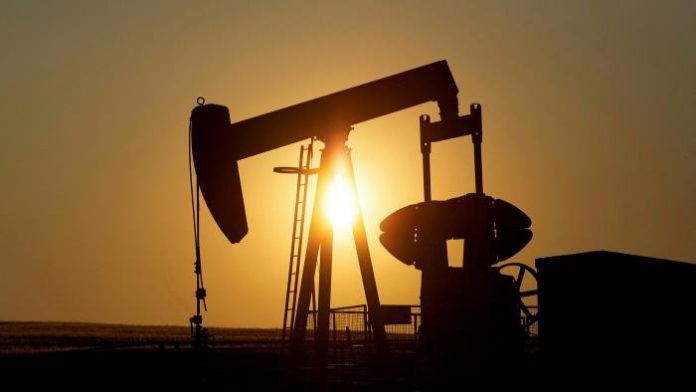US oil prices crashed into negative territory for the first time in history as the evaporation of demand caused by the coronavirus pandemic left the world awash with oil and not enough storage capacity — meaning producers are paying buyers to take it off their hands.
West Texas Intermediate, the US benchmark, traded as low as -$40.32 a barrel in a day of chaos in oil markets.
The settlement price on Monday was -$37.63, compared to $18.27 on Friday. Traders capitulated in the face of limited access to storage capacity across the US, including the country’s main delivery point of Cushing, Oklahoma.
The collapse will be a blow to Donald Trump, who has gone to great lengths to protect the oil sector, including backing moves by OPEC and Russia to cut production and pledging support for the industry.
After the price drop, Mr Trump reiterated plans for the US to open the federally-controlled strategic petroleum reserve to store excess oil that cannot find a home in commercial storage facilities.
Congress refused to fund federal purchases of crude oil when the White House first proposed the idea several weeks ago, but the Department of Energy has also considered the possibility of leasing capacity to producers.
“We’re filling up our national petroleum reserves, the strategic reserves, and we’re looking to put as much as 75m barrels into the reserves themselves that would top it out,” Mr Trump said at his daily news conference.
“We’re going to either ask for permission to buy it, or we’ll store it, one way or the other, it will be full.”
The shale sector has transformed the US into the world’s largest oil producer in the past decade, giving the president a foreign policy tool he has brandished as “US energy dominance”, but which now faces a rapid decline.
Negative prices are the latest indication of the depth of the crisis hitting the oil sector after lockdowns imposed in many of the world’s major economies have sent crude demand tumbling by as much as a third, leaving the industry facing what Jefferies analyst Jason Gammel called “the bleakest oil macro outlook” he had ever seen.
Not all oil contracts are trading in negative territory. Brent, the international benchmark, lost 8.9 per cent on Monday to fall to $25.57 a barrel, but is less immediately afflicted by storage issues.
Brent is a seaborne crude allowing traders to easily ship it to areas of higher demand.
Amrita Sen at Energy Aspects said: “With Brent you can put it on ships and move it around the world immediately. Storage tanks at Cushing, however, will be full in May.”
WTI contracts for delivery in June lost 14.7 per cent but held above $20 a barrel, though traders warned it could face further losses. Both benchmarks traded above $65 a barrel as recently as January.
Stephen Schork, editor of oil-market newsletter The Schork Report, said he expected access to storage capacity in the US to be exhausted within two weeks — and cautioned that the collapse of the country’s oil consumption was accelerating.
“It just gets uglier from here,” Mr Schork said, adding that sharply rising unemployment numbers meant fewer and fewer Americans would be driving, hurting petrol demand even during its peak summer months.
“This summer is dead on arrival. The biggest demand months are not going to happen,” he said. Prices for physical grades in many North American regions have fallen into the low single digits reflecting a dearth of buyers able to take delivery of oil, even as prices for later contracts have held up marginally better due to some investors betting on an eventual rebound.
Source: ft.com/energynewsafrica.com















